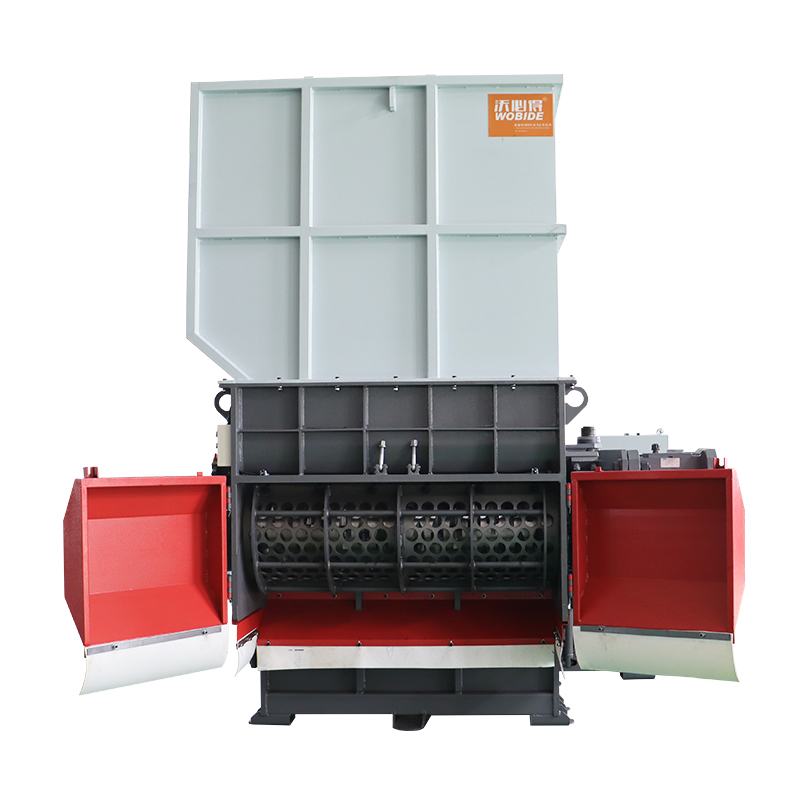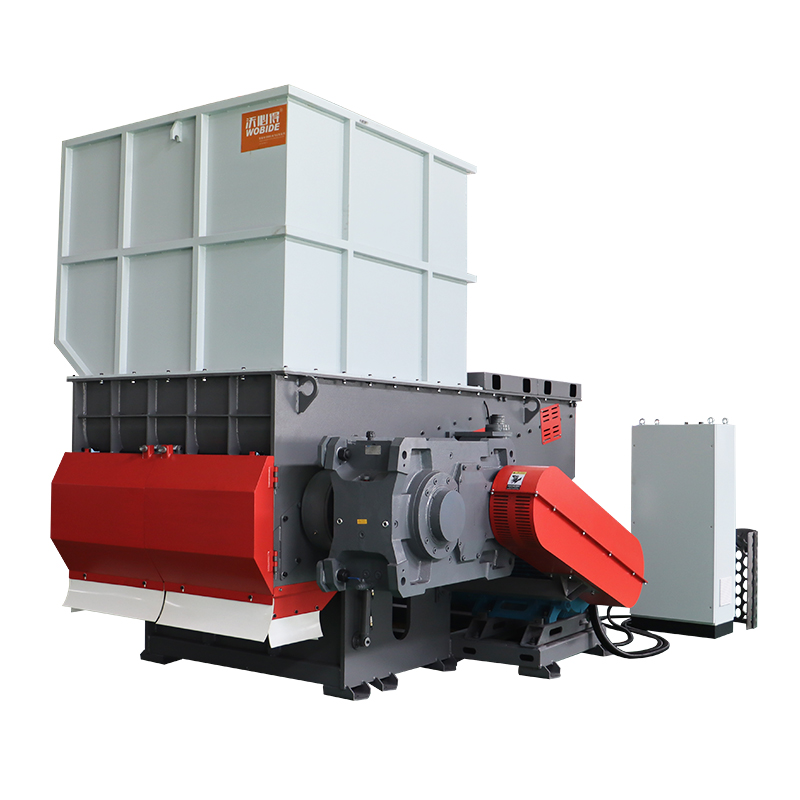Wobide Machinery(Zhejiang)Co., Ltd. is a solid waste recycle machinery manufacturer that engaged in design, development, production and sales.
- The product itself: minimalist design, extremely reliable
• The whole machine has only three modules - reduction motor, shredding chamber, and hydraulic pusher, and the floor space is less than that of a car.
• The core component uses NiCrMo alloy knife roller, and the surface hardening layer thickness reaches 2 mm. The official promise is "three years without knife replacement".
• The intelligent load feedback system can automatically reverse within 0.3 seconds, and the jamming rate is reduced by 90%.
• The modular screen can complete the aperture switching in as fast as 5 minutes, realizing "one machine with multiple specifications". - Working principle: one knife, one net, and one pusher
1. Knife roller: The rotor with a diameter of 400 mm is equipped with 32 detachable moving knives, forming a 0.3 mm shear gap with the fixed knife, and "biting" the material like scissors.
2. Pushing: The horizontal hydraulic pusher continuously feeds at a pressure of 1.5 MPa to ensure that waste materials of uneven thickness can also be close to the knife roller.
3. Screen: The aperture is 10–100 mm and can be replaced. The fragments need to “squeeze” through the screen to leave the cavity, thus controlling the discharge size.
4. Cycle: When overloaded, the rotor automatically reverses two turns and then rotates forward to avoid manual clearance; the dust enters the bag filter directly through negative pressure suction. -
This machine covers three major areas: recycled plastics, urban solid waste, and confidential destruction. The single-axis shredder solves 80% of conventional shredding needs with the complexity, and is becoming the "standard configuration" of small and medium-sized recycling lines. "


-
With the expansion of the "zero-waste city" pilot, the single-axis shredder may become a "desktop-level" equipment for each solid waste processing node like a printer - turning complex waste into a secondary resource that can be measured, traded, and traced, which is its greatest value.

 English
English 简体中文
简体中文 عرب
عرب España
España







